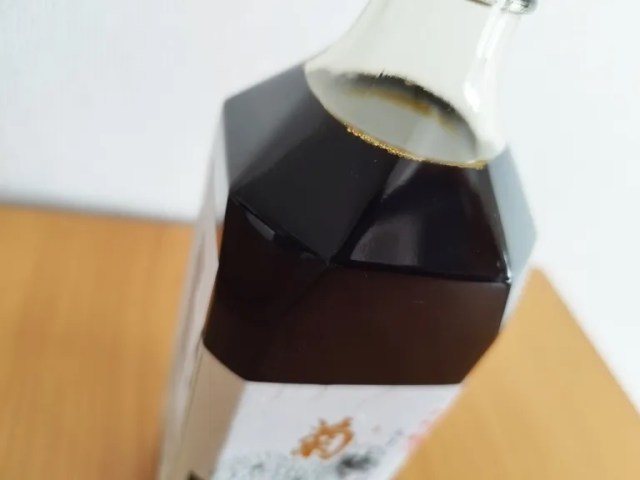
Seiji prepares to have his life changed by a Shikoku soy sauce.
Like most people born and raised in Japan, our reporter Seiji Nakazawa has been using soy sauce as a condiment for his whole life. So it definitely piqued his interest when he was browsing English-language Reddit and came across a thread where an American woman said she’d bought a new brand of say sauce and declared “I’m not exaggerating when I say that it is life changing!”
The woman even included a photo of the bottle. With its label written entirely in Japanese, Seiji was quickly able to see that it was a bottle of soy sauce made by Yamaroku, a soy sauce company on the island of Shodoshima in Kagawa Prefecture in Japan’s Shikoku region.
Seiji had never tried Yamaroku soy sauce, or, honestly, even heard of it. Doing a little research, though, he learned that the company has a history that goes back roughly a century and a half. If its soy sauce really has life-changing levels of deliciousness, it would stand to make an especially big difference in Seiji’s life, considering how much soy sauce he, like most Japanese people, consumes.
And so Seiji bought a bottle. To clarify, Seiji ordered a bottle of Kikubishio soy sauce, which has pictures of chrysanthemums (kiku in Japanese) and a black stripe on the bottom left part of the label. Yamaroku also has a soy sauce variety called Tsurubishio with cranes (tsuru) and a red stripe on the label, but Kikubishio is the one the Reddit poster said was life-changing, while a mistakenly purchased bottle of Tsurubishio “taste[d] like normal American-issued soy sauces.”
▼ The black stripe on the Kikubishio bottle
Kikubishio can be ordered online through Amazon (here) and Rakuten Japan (here), and with shipping the 500-mililiter (16.9-ounce) bottle came to about 2,600 yen (US$17.70), with the shippig being about 660 yen of that. Compared to a similar-sized bottle of regular Kikkoman, Japan’s most common brand of mass-market soy sauce, Kkubishio is about six to seven times more expensive, but hey, if it changed Seiji’s life, it’d be worth the extra cost.
Opening the bottle, he poured the Kikubishio into a soy sauce dish.
It seemed a touch more aromatic than the average soy sauce. Taking a taste, Seiji found the flavor to be good too, but not anywhere near what he’d call life-changing. “It pretty much tasted like, well, soy sauce,” he says.
But Seiji will be the first person to admit that he’s not a soy sauce sommelier, so next he decided to do a side-by-side tasting of Kikubishio and regular Kikkoman soy sauce.
Once again, he grabbed a soy sauce dish and poured in some Kikkoman, and was shocked to see…
…just how different the colors were between the two brands!
Placed next to each other, the Kikkoman was bright and warm in color, while the Kikubishio was darkly opaque. However, Seiji didn’t come away from this impressed by the visual density of the Kikubishio so much as by the clarity of the Kikkoman. Honestly, when Seiji imagines soy sauce in his mind’s eye, he pictures a dark hue like the Kikubishio, so his surprise was about how different from that the Kikkoman looks when they’re viewed simultaneously.
Checking their scents, the Kikubishio did indeed have a relatively more pronounced bouquet. Tasting each, he found the Kikubishio to have, by comparison, the more refined aftertaste, one which, if he had to liken it to something, Seiji would say reminded him of wine.
The key clause there, though, is “if he had to liken it to something.” Really, though, the difference in taste between the two was fairly small, and miniscule in comparison to their difference in color.
But now it was time for the main event. As we mentioned at the start of this article, soy sauce is a condiment. It’s not really something that’s meant to be tasted or consumed all by itself, so the only was to see if Kikubishio is truly life-changing would be to use it as intended, as a seasoning.
This was also a good excuse for Seiji to put some sushi on the company expense account.
Seiji decided to go with a maguro (tuna) takeout set from popular revolving sushi chain Sushiro. Sushiro really knows their stuff when it comes to tuna, but they’re still an affordable chain, enough so that Seiji is very familiar with how their sushi tastes, which would let him judge how life-changing the Kikubishio itself is.
So Seiji ate a piece of sushi with the Kikubishio…
…and then another with the Kikkoman.
Remember how he couldn’t tell much of a difference in flavor when he tried the soy sauces by themselves? Well, after trying them with sushi, Seiji says:
“I could taste even less difference between them.”
Again, Seiji isn’t at all saying that Kikubishio is bad. He’s just saying that, to his taste buds, the basic Kikkoman tastes just as good, and at a fraction of the cost.
Seiji couldn’t help feeling just a little sad that his life hadn’t been changed by the Kikubishio, and also couldn’t help wondering how it could have made such a huge impression on the Reddit thread starter. Then he remembered the woman’s comment about how it tasted so much better than “normal American-issued soy sauces.” Seiji isn’t familiar with what the soy sauce that’s readily available in the United States tastes likes, so maybe Kikubishio really is on another level of deliciousness by that standard. For him, though, it’s not hard, or expensive, to find soy sauce that tastes that good in Japan. So while this didn’t turn out to be a life-changing experience for him, it showed him that maybe, in terms of soy sauce, he’s already been living the good life all along.
Photos ©SoraNews24
● Want to hear about SoraNews24’s latest articles as soon as they’re published? Follow us on Facebook and Twitter!
[ Read in Japanese ]

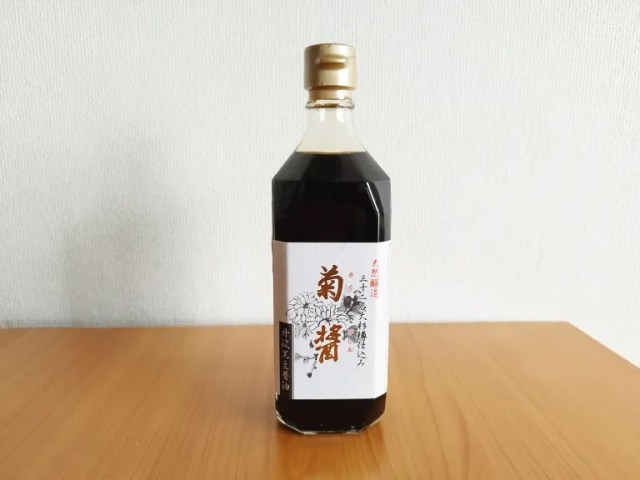
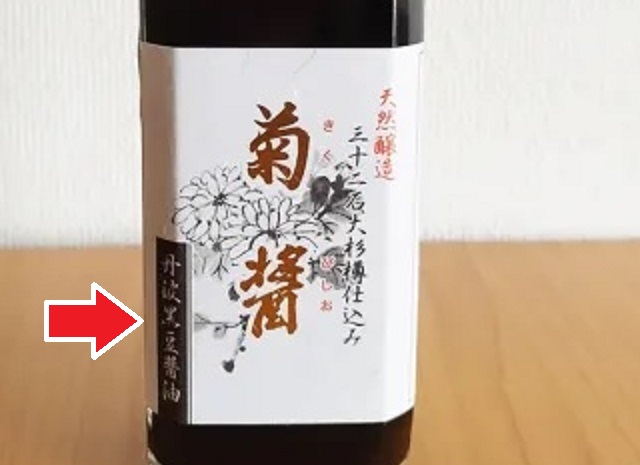
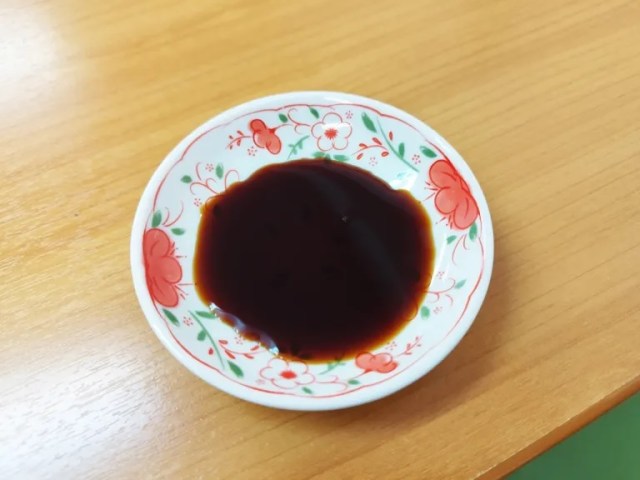

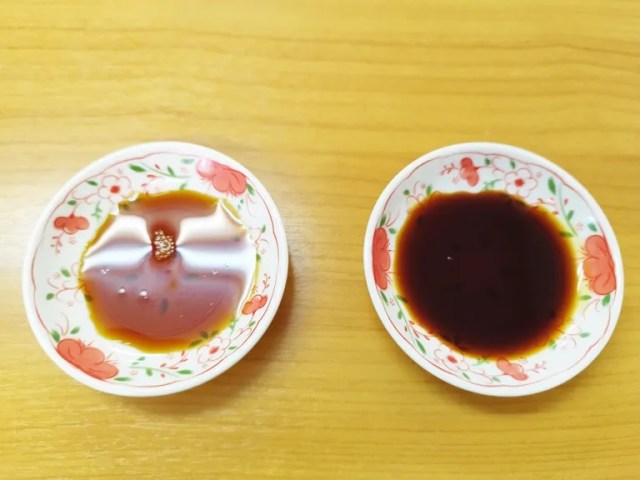
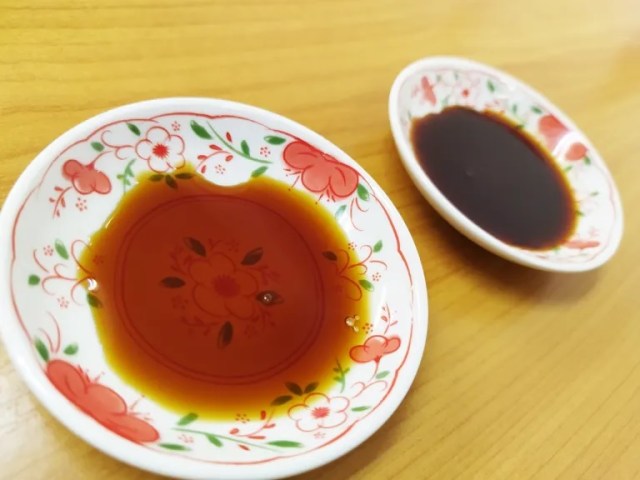

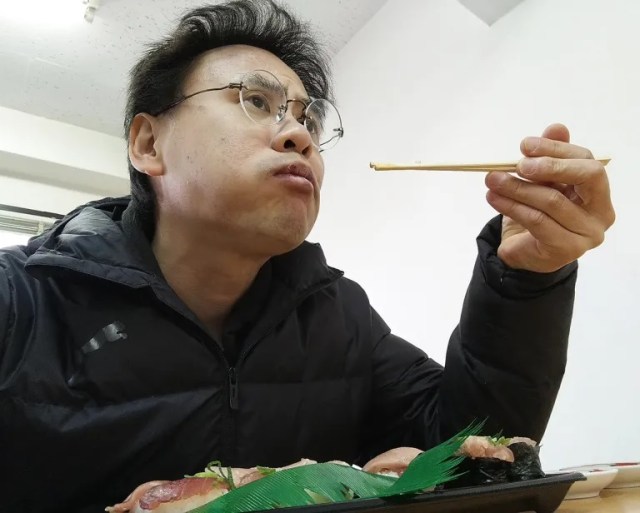
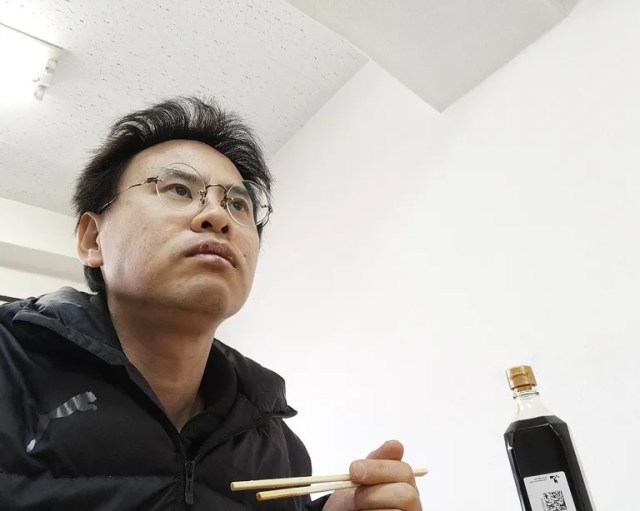
 Put down the soy sauce! We try a new “expert” way to season your sushi【Taste test】
Put down the soy sauce! We try a new “expert” way to season your sushi【Taste test】 Transparent soy sauce is a thing — we saw it, we tried it, we’re confused by it
Transparent soy sauce is a thing — we saw it, we tried it, we’re confused by it East meet West in kitchen as Japanese ingredient makes Western-style cream stew more delicious
East meet West in kitchen as Japanese ingredient makes Western-style cream stew more delicious Supermarket sushi becomes a hot topic with foreigners on Reddit, but is it any good?
Supermarket sushi becomes a hot topic with foreigners on Reddit, but is it any good? Trying some Umui sauces made only on a remote Japanese island with a population of 50【Taste test】
Trying some Umui sauces made only on a remote Japanese island with a population of 50【Taste test】 Foreigner’s request for help in Tokyo makes us sad for the state of society
Foreigner’s request for help in Tokyo makes us sad for the state of society Seaside scenery, history, and so many desserts on Yokohama’s Akai Kutsu【Japan Loop Buses】
Seaside scenery, history, and so many desserts on Yokohama’s Akai Kutsu【Japan Loop Buses】 Japanese city loses residents’ personal data, which was on paper being transported on a windy day
Japanese city loses residents’ personal data, which was on paper being transported on a windy day Should you add tartar sauce to Japanese curry rice? CoCo Ichi makes diners an unusual offer
Should you add tartar sauce to Japanese curry rice? CoCo Ichi makes diners an unusual offer Akihabara pop-up shop sells goods made by Japanese prison inmates
Akihabara pop-up shop sells goods made by Japanese prison inmates Mt. Koya planning to instate visitor’s tax to cope with huge tourist numbers
Mt. Koya planning to instate visitor’s tax to cope with huge tourist numbers Ghibli Park now selling “Grilled Frogs” from food cart in Valley of Witches
Ghibli Park now selling “Grilled Frogs” from food cart in Valley of Witches Japanese company uses “crow language” to keep them away from garbage 【Video】
Japanese company uses “crow language” to keep them away from garbage 【Video】 The picture-perfect cosplayers of Comiket 100’s Day 1【Photos】
The picture-perfect cosplayers of Comiket 100’s Day 1【Photos】 New Totoro, Catbus, and other Ghibli plushies transform from cushions to blankets【Photos】
New Totoro, Catbus, and other Ghibli plushies transform from cushions to blankets【Photos】 McDonald’s new Happy Meals offer up cute and practical Sanrio lifestyle goods
McDonald’s new Happy Meals offer up cute and practical Sanrio lifestyle goods Japanese ramen restaurants under pressure from new yen banknotes
Japanese ramen restaurants under pressure from new yen banknotes French Fries Bread in Tokyo’s Shibuya becomes a hit on social media
French Fries Bread in Tokyo’s Shibuya becomes a hit on social media Studio Ghibli releases new action figures featuring Nausicaä of the Valley of the Wind characters
Studio Ghibli releases new action figures featuring Nausicaä of the Valley of the Wind characters Red light district sushi restaurant in Tokyo shows us just how wrong we were about it
Red light district sushi restaurant in Tokyo shows us just how wrong we were about it New private rooms on Tokaido Shinkansen change the way we travel from Tokyo to Kyoto
New private rooms on Tokaido Shinkansen change the way we travel from Tokyo to Kyoto Tokyo Tsukiji fish market site to be redeveloped with 50,000-seat stadium, hotel, shopping center
Tokyo Tsukiji fish market site to be redeveloped with 50,000-seat stadium, hotel, shopping center Beautiful Ghibli sealing wax kits let you create accessories and elegant letter decorations【Pics】
Beautiful Ghibli sealing wax kits let you create accessories and elegant letter decorations【Pics】 Studio Ghibli releases Kiki’s Delivery Service chocolate cake pouches in Japan
Studio Ghibli releases Kiki’s Delivery Service chocolate cake pouches in Japan New definition of “Japanese whiskey” goes into effect to prevent fakes from fooling overseas buyers
New definition of “Japanese whiskey” goes into effect to prevent fakes from fooling overseas buyers Our Japanese reporter visits Costco in the U.S., finds super American and very Japanese things
Our Japanese reporter visits Costco in the U.S., finds super American and very Japanese things All-you-can-drink Starbucks and amazing views part of Tokyo’s new 170 meter-high sky lounge
All-you-can-drink Starbucks and amazing views part of Tokyo’s new 170 meter-high sky lounge More foreign tourists than ever before in history visited Japan last month
More foreign tourists than ever before in history visited Japan last month New Pokémon cakes let you eat your way through Pikachu and all the Eevee evolutions
New Pokémon cakes let you eat your way through Pikachu and all the Eevee evolutions Disney princesses get official manga makeovers for Manga Princess Cafe opening in Tokyo
Disney princesses get official manga makeovers for Manga Princess Cafe opening in Tokyo Sales of Japan’s most convenient train ticket/shopping payment cards suspended indefinitely
Sales of Japan’s most convenient train ticket/shopping payment cards suspended indefinitely Sold-out Studio Ghibli desktop humidifiers are back so Totoro can help you through the dry season
Sold-out Studio Ghibli desktop humidifiers are back so Totoro can help you through the dry season Japanese government to make first change to romanization spelling rules since the 1950s
Japanese government to make first change to romanization spelling rules since the 1950s Ghibli founders Toshio Suzuki and Hayao Miyazaki contribute to Japanese whisky Totoro label design
Ghibli founders Toshio Suzuki and Hayao Miyazaki contribute to Japanese whisky Totoro label design Doraemon found buried at sea as scene from 1993 anime becomes real life【Photos】
Doraemon found buried at sea as scene from 1993 anime becomes real life【Photos】 Tokyo’s most famous Starbucks is closed
Tokyo’s most famous Starbucks is closed One Piece characters’ nationalities revealed, but fans have mixed opinions
One Piece characters’ nationalities revealed, but fans have mixed opinions We asked a Uniqlo employee what four things we should buy and their suggestions didn’t disappoint
We asked a Uniqlo employee what four things we should buy and their suggestions didn’t disappoint Princesses, fruits, and blacksmiths: Study reveals the 30 most unusual family names in Japan
Princesses, fruits, and blacksmiths: Study reveals the 30 most unusual family names in Japan Takoyaki store in Osaka becomes a hot topic on Reddit, but is it any good?
Takoyaki store in Osaka becomes a hot topic on Reddit, but is it any good? Japanese ramen chain becomes a hot topic with foreigners on Reddit, but is it any good?
Japanese ramen chain becomes a hot topic with foreigners on Reddit, but is it any good? Disney soy sauce is now on sale in Japan—four different tastes, four cute designs
Disney soy sauce is now on sale in Japan—four different tastes, four cute designs What it’s like to eat dancing squid in Japan for the first time
What it’s like to eat dancing squid in Japan for the first time The best soba restaurant on Yakushima island, according to locals
The best soba restaurant on Yakushima island, according to locals Now there’s chocolate-flavored soy sauce…for shaved ice!
Now there’s chocolate-flavored soy sauce…for shaved ice! This is the one and only kakuni pork bowl restaurant in Tokyo, and it’s amazing
This is the one and only kakuni pork bowl restaurant in Tokyo, and it’s amazing This London ramen restaurant’s super-strange ramen shocks our Japanese taste-tester
This London ramen restaurant’s super-strange ramen shocks our Japanese taste-tester Our Japanese reporter eats instant ramen from a bag for (almost) the first time in his life
Our Japanese reporter eats instant ramen from a bag for (almost) the first time in his life Can our Japanese writers guess what this pink soy sauce is by taste alone?【Video】
Can our Japanese writers guess what this pink soy sauce is by taste alone?【Video】 Which convenience store has the best kakuni Japanese braised pork? We find out【Taste test】
Which convenience store has the best kakuni Japanese braised pork? We find out【Taste test】 We try cooking yakisoba with real Japanese buckwheat soba【SoraKitchen】
We try cooking yakisoba with real Japanese buckwheat soba【SoraKitchen】 Should you dip your egg sushi in soy sauce before you eat it? Survey asks Japanese diners
Should you dip your egg sushi in soy sauce before you eat it? Survey asks Japanese diners Japanese condiment company Kikkoman encourages Brits to desecrate white rice with tasty sauce
Japanese condiment company Kikkoman encourages Brits to desecrate white rice with tasty sauce Noodle joint in Harajuku becomes a hot topic with foreigners on Reddit, but is it any good?
Noodle joint in Harajuku becomes a hot topic with foreigners on Reddit, but is it any good? Solar Chef: We tried cooking an egg using the power of the sun and a magnifying glass
Solar Chef: We tried cooking an egg using the power of the sun and a magnifying glass
Leave a Reply